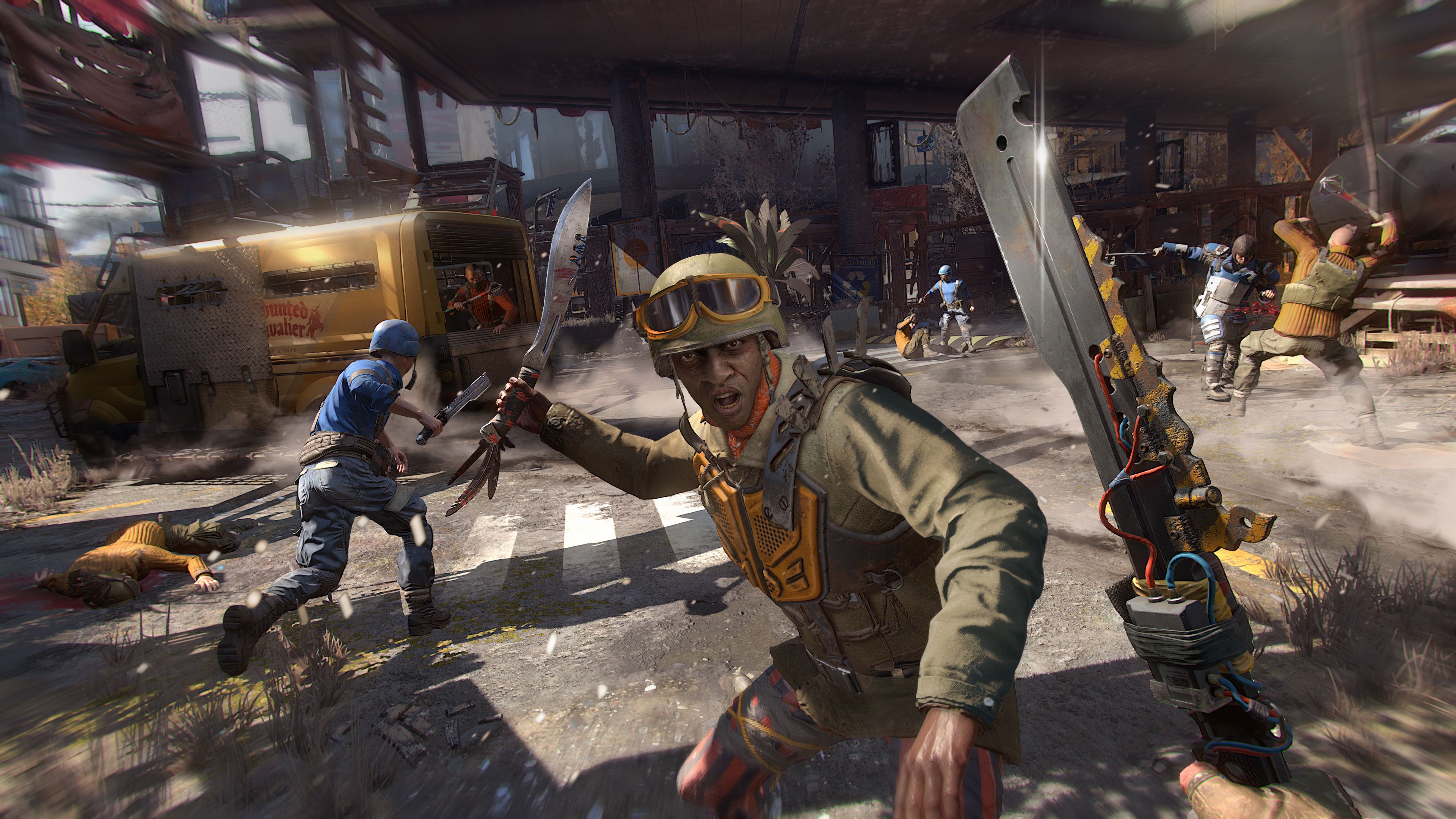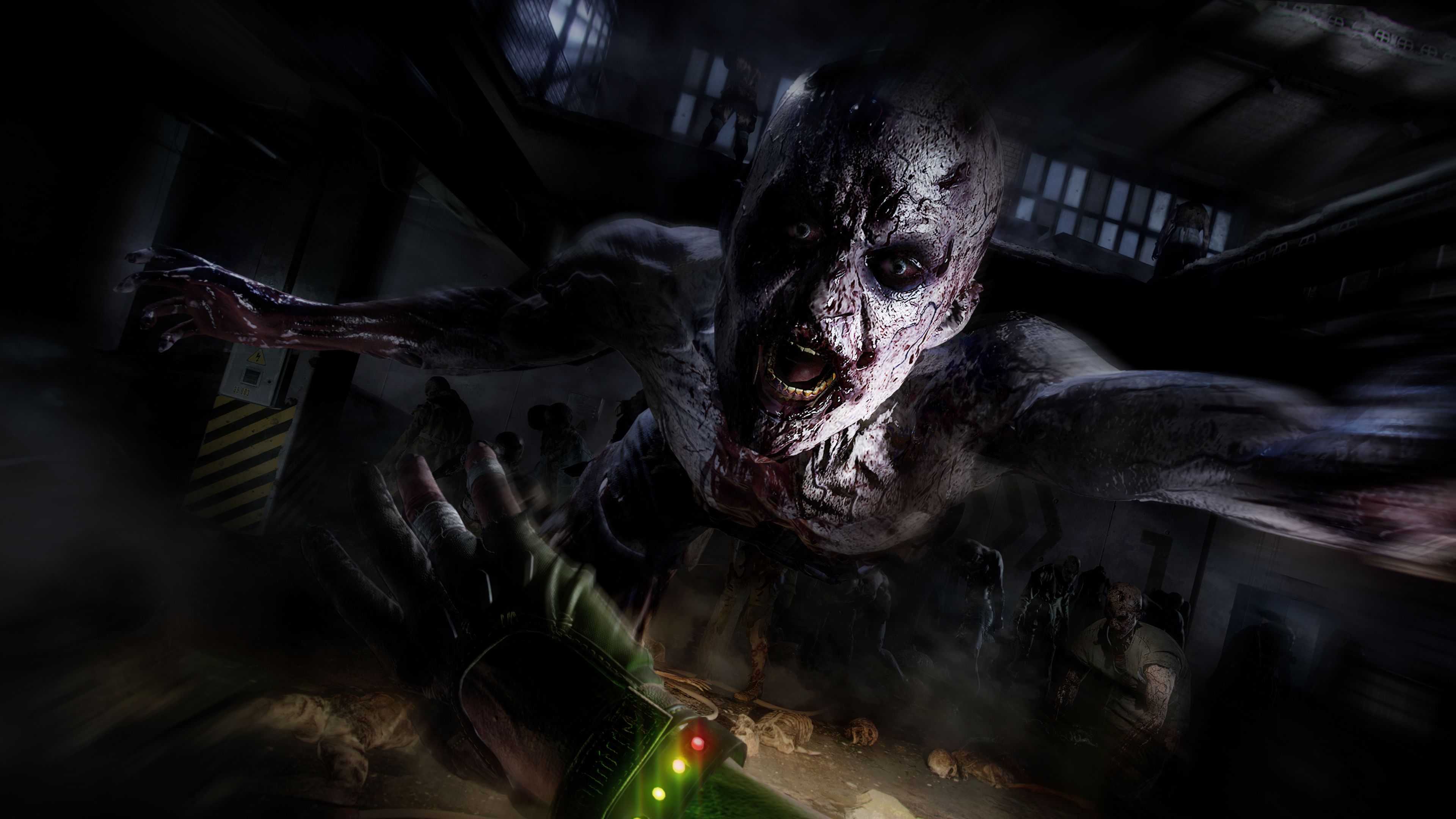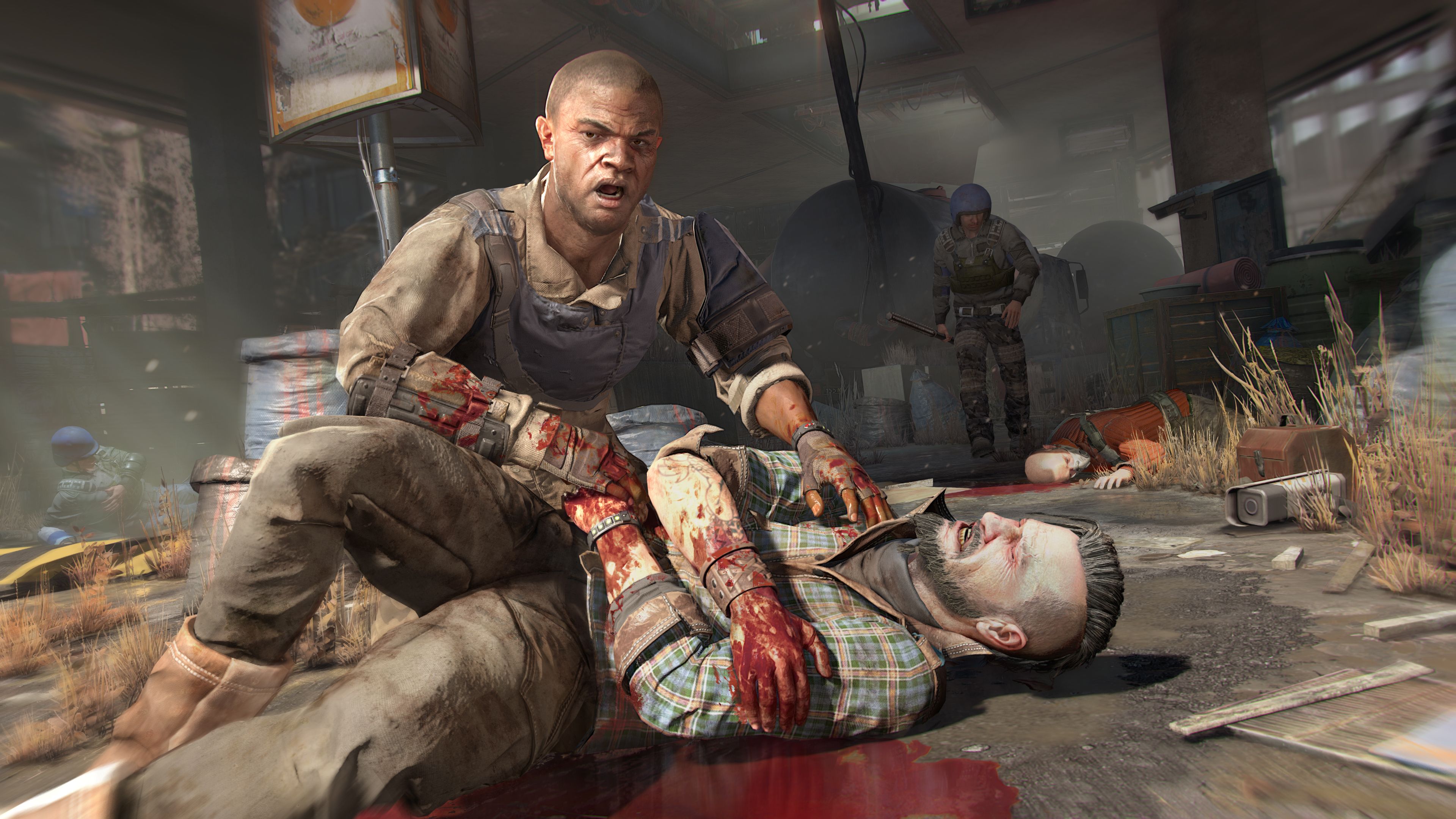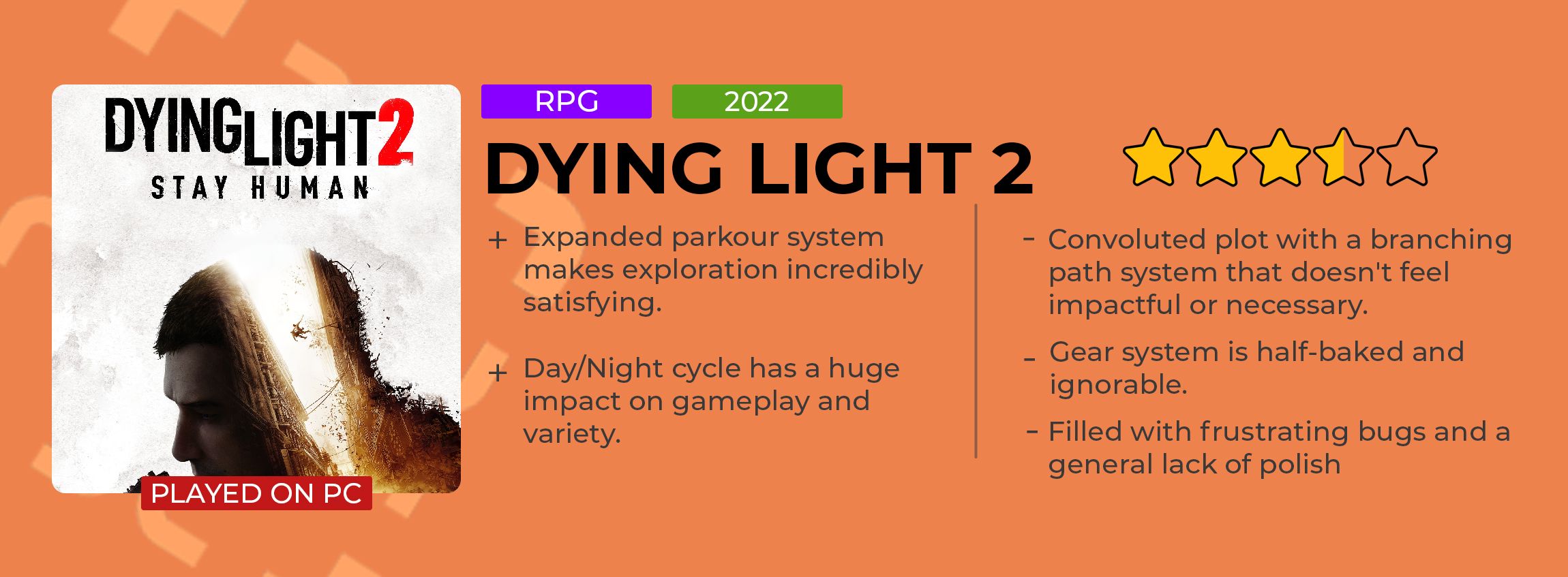Dying Light 2 is a game obsessed with dichotomies. There’s the city above where survivors have retrofitted the rooftops into gardens and safe-havens, and the city below where the hordes of infected roam. Polarity is baked into the day/night cycle and the upgrade paths that turn the city into either a parkour playground or a death trap dungeon for the undead. Every choice is a binary, typically between two opposing groups: the fascistic Peacekeepers that want to rule the city and the Free Folk who resist them. Techland was so committed to splitting every concept, mechanic, and system into two equal halves that it even managed to make Dying Light 2 equal parts elating and miserable. There’s a remarkably engaging and satisfying open-world experience at the core of Dying Light 2, but it's buried too deeply under so many layers of half-baked systems, unrewarding mechanics, and unpolished gameplay to really shine through.
Following the events of the first Dying Light, the GRE organization managed to develop a cure for zombie-ism. Like any evil megacorp though, they continued to iterate on the virus until inadvertently causing a second outbreak that quickly swept across the entire planet. You play as Aiden Caldwell, a pilgrim who travels from settlement to settlement looking for his long-lost sister. Aiden’s journey leads him to Villedor, the last known city in existence, where he's quickly swept up in a conflict between the lawmaking Peacekeepers and the ideologically opposed Free Folk. To find his sister, Aiden will have to cooperate with the survivors of Villedor by using his extreme parkour skills to help them take back the city from the undead and repel a group of violent marauders called the Renegades.
Much has been made of the choice-based narrative system developed for Dying Light 2, which is one of many, many new additions that differentiates the sequel from the original. Techland promised a plot with many branching paths that will allow you to shape Aiden’s story with your choices. This is far from the first game to be marketed on the premise that your choices matter, but like all the rest, the claim has been massively inflated here. While you will have the occasional alternate mission based on your choices, it seems that all roads quickly lead back to the middle without offering any actual change to the overall direction of the story. There are a series of more impactful decisions to be made directly leading up to the finale, but by then I was too disillusioned with the convoluted, weightless plot and its many unlikeable characters to really care about the consequences of my actions. There’s a good ending and a bad ending with a few variables mixed in depending on who lives and dies at the end, but that’s about the extent of the narrative impact your choices make.
Though I disengaged with the story fairly early, exploring the city via its rooftops never got old. Even after more than 50 hours, I still find joy in the freerunning and parkour mechanics, which have been vastly improved from the original. It takes some getting used to though. With a much higher jump and lower gravity, it feels like jumping on the moon at first, especially if you’ve put a lot of time into the first Dying Light. Once you get out into Old Villedor, aka The City, and discover all the new ways to interact with the environments, it's easy to see why the locomotion was changed so much for the sequel.
The world is a giant parkour playground filled with interesting routes to discover and unique buildings to scale. You’re given a much broader selection of traversal tools this time, like vaults, wall running, slide jumps, and a paraglider, and by combining them skillfully you can discover incredibly satisfying ways to move around the city. You begin with just a little stamina and very few abilities, so you have to be as efficient as possible with every jump and climb, so you don’t end up falling multiple stories down into a crowd of zombies. Eventually you’ll be slide-jumping off a roof, grabbing a rope in midair, leaping onto a wall, and running along it Titanfall-style before landing on a lowrise in a perfect roll. Even then, I still find myself holding my breath when I make that first jump and leaning forward in my chair to make sure I get just enough distance to grab the next ledge. Open world games often bottom out once you get sick of moving from map marker to map marker to check off missions from an endless list, but Dying Light 2 reverses the standard formula by making the journey between points of interest so much fun. Traversal is so fun, in fact, that the missions themselves feel like interruptions most of the time.
There are some outstanding story missions scattered throughout the game – like ‘Broadcast’, which has you ascend a zombie-infested skyscraper using your new grappling hook – but even the best missions are overshadowed by an unbelievable amount of filler. There are 30 different POIs on the map, from Bandit Camps and mini-bosses to climbing challenges like Windmills and Radio Towers, to the dungeon-like Dark Hollows and abandoned shops that can only be explored at night. There are airdrops to be found atop the tallest buildings and health/stamina boosting upgrades called Inhibitors scattered all around the city. There’s no shortage of things to do, but the problem is they’re poorly incentivized.
Part of the issue is the lack of any real meaningful gear. While the first Dying Light offered collectible blueprints for increasingly more powerful (and ridiculous) weapons, Dying Light 2 offers no weapon crafting. There’s no unique rewards to pursue from side quests and POIs. You can earn money or armor, but the armor pieces and the single-digit stat increases they offer to things like one-handed damage or stamina recovery feel inconsequential, even in the endgame.
You can also buy and upgrade mods, but those have a similarly negligible impact. The combat is simple enough that you can spam attacks and throw in the occasional block without having to worry about your weapon damage or modifiers at all. You can farm abandoned stores for money and zombie parts to buy better gear and upgrade your mods if you really want to, but there’s no meaningful benefit to engaging with those systems.
Dying Light 2 is at its best when you’re scaling skyscrapers and discovering breathtaking views of the city, but as soon as you descend back down to earth and start to take a closer look at things it all falls apart. Beyond the poorly incentivized activities and pointless gear, there’s also a general lack of polish that pervades the entire experience. Environments are repeated so often you’ll get deja vu in places you’ve never been. Doorways, windows, ramps, and corners will frequently stop you dead in your tracks. There were three occasions when I went through a door or entered an area that shouldn’t have been open yet and I found myself trapped until I reloaded. A lot of the issues will get fixed with patches, but I suspect there’s considerably more bugs and issues to be discovered come launch.
It’s trying to do too much and missing the mark almost entirely across the board. The improved parkour mechanics and the vertically expanded world would have been great improvements over the original on their own, but the sequel had too much ambition. The branching narrative is a whiff, the loot is underdeveloped, and the character progression is even less satisfying than in the original. Dying Light 2 is a game with a troubled development, and unfortunately, it shows. I know how much the first game grew significantly over the years with patches and content updates, and I can only hope that this one gets as much support, because it still needs a lot of work before it becomes the game we were first promised back in 2018, if ever.
Score: 3.5/5. A PC code was provided by the publisher for this review
Source: Read Full Article



